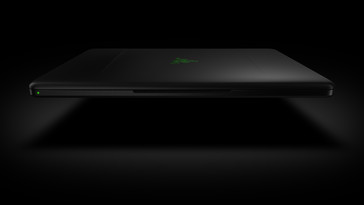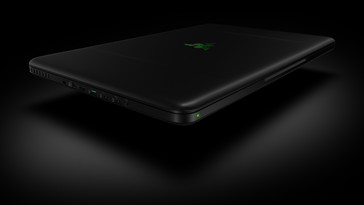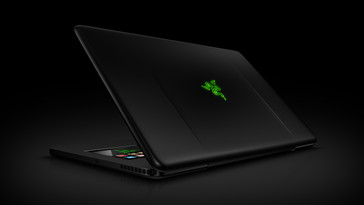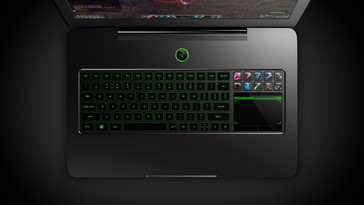Razer Blade gaming laptop: Initial impressions
Razer ran a long teaser campaign till just before launching the Razer Blade gaming laptop recently. It was initially called Switch Blade but was later changed to the present name. Reasons not mentioned, but I think mainly because the Razer Blade sounds cooler! The 17.3” monster has an LED backlit HD panel with a 1920x1080 pixels worth of resolution, a 320GB HDD, and is only .88 inches thick when it comes to such a huge form factor, while weighing about 7lbs (equivalent to 3.17kgs). The guts look good for the small chassis with the 2.8GHz Core i7-2640M along with the NVIDIA GeForce GT 555M card and as much as 8GB DDR3 RAM and 2GB dedicated GDDR5 video memory. There are Wi-Fi 802.11b/g/n and a 60Wh battery.
The initial impressions sure tend to agree with what the company claims – world’s first true gaming laptop. We look closer.
Exterior
The matte finish throughout the body will surely increase visibility to the gamer in a brightly lit place by reducing the reflection on the screen. It will also largely stay away from fingerprints, letting you have an unobstructed view of the darker areas. The black Aluminum body looks sleek and streamlined with probably the thinnest of the gaming notebooks.
The keyboard looks amazing with the green LED background color. The island-style keys look comfortable to type and will surely catch your imagination bathed in bright green. In fact the green color is so prevent that it looks like the Green Hornet’s gadget.
One unique feature of the Razer Blade is the secondary display panel presented as a touchpad on the right side of the keyboard, where the lower part of your Num keys would normally reside. Right on top of the touchpad there are a number of display hotkeys for various controls during game-playing. Now this looks cool, but does it work just as good? ZybakTV rightly says that serious gamers will hardly use the touchpad at all, and will resort to a gaming mouse as usual. Also when it’s turned on, you actually run into a risk of accidentally swiping over it which can invoke some instruction into your game (how about turning the character heads down right when the villain is head-on?). So this feature may look cool and futuristic – we would be glad to have some test cases from Razer that we are not aware of.
Inside
The specs are impressive to say the least. It sports an Intel Core-i7 2640M processor with 2.8GHz of clock speed, which can be over clocked till a maximum of 3.5GHz. This dual-core chip is based on the Sandy Bridge architecture and an improved Turbo boost 2.0 makes it faster than similarly clocked Arrandale siblings. This is accompanied by an NVIDIA GeForce GT555M discrete graphics card with a dedicated 2GB GDDR5 memory. That is not all – the card supports Optimus technology that lets you switch between dedicated and integrated graphics mode depending on the demand of the program, saving energy usage and battery life. There are the 8GB RAM (probably in one slot) and 320GB SATA hard disk to store all your massive game files.
Performance
All-in-all this looks very promising on the cards. Our main concern would be the heat generated from such powerful components. Also the 60Wh battery is not enough for playing games for long while AC power is not available. At $3000, we would have liked a quad-core processor too.
Connectivity
It has all the necessary I/O ports including the HDMI out, two USB 2.0 along with a USB 3.0 port, Gigabyte Ethernet port, mic and headphone jacks and power port. Wireless connectivity is taken care of by the Wi-Fi 802.11b/g/n and Bluetooth 3.0. No mention of VGA port.
Verdict
The Razer Blade has enough power and looks to satisfy the casual gamers, but this is certainly not a machine worth $3000. A quad-core is missing, the battery is integrated and we are still confused about the use-cases of the display touchpad .







